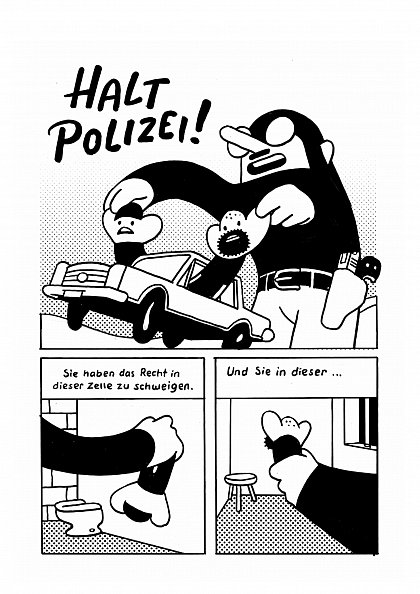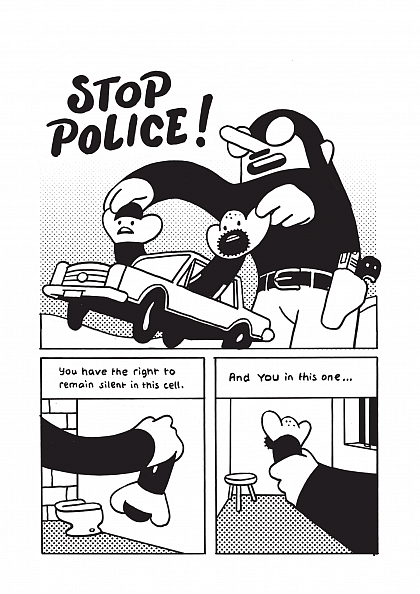The Prisoners' Dilemma as a Comic Strip
This case illustrates the Prisoners' Dilemma (PD) in a comic strip. Twenty-one images (drawn by Max Baitinger ) with speech bubbles depict how two suspects are caught by the police and offered the choice between remaining silent and betraying their buddy. The PD illustrates how people may fail to cooperate even though they would benefit from cooperation. Offering a precise explanation for a wide range of problems we observe in cooperative societies, the PD belongs to the standard curriculum in economics programs. In addition to its 'classic' use, the PD is also relevant for many issues discussed in (business) ethics courses. It is a suitable analytical tool to address questions of human interaction, the evolution of morals, and norm violation. The purpose of this case and the corresponding teaching note is to explain the use of the PD as a case study in the context of business ethics classes.
The comic strip is part of a series of case studies written at the Wittenberg Center for Global Ethics (WCGE). It has been published by the Case Centre, together with a detailed teaching note, suggesting how to use the case in business ethics classes.
Are you interested in this case study? Please contact philipp.schreck@wiwi.uni-halle.de or get in touch with the Case Centre.

The comic strip's first page (German version)

The comic strip's first page (English version)
The Prisoners’ Dilemma has been devised by Albert Tucker in 1950 and is based on a game theoretical problem first described by Merrill Flood and Melvin Dresher (Poundstone, W. [1993]. Prisoner's Dilemma / John von Neumann, Game Theory, and the Puzzle of the Bomb. New York: Anchor Books).




